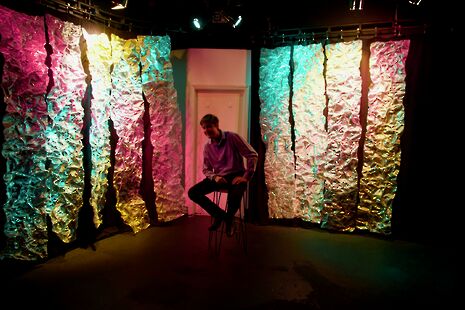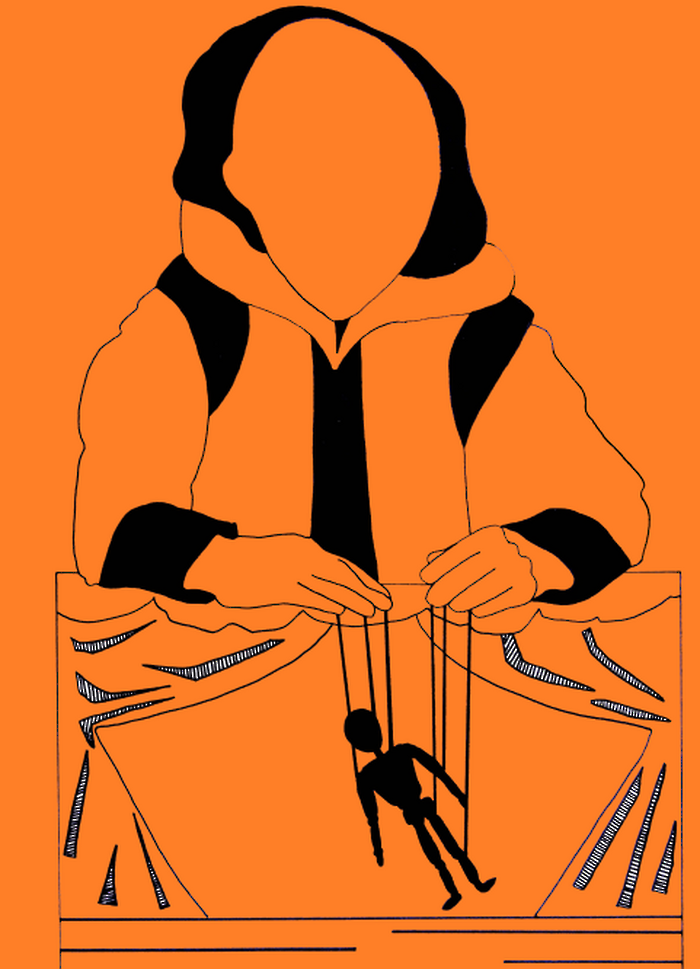Harrogate review
Expect to be completely disarmed: Harrogate is a play which will enthrall you with its carefully designed set and nuanced acting -

As a reviewer, it’s usually a good sign when I pick up my pen to scribble something down. There are moments, however, when I am so enthralled, so shocked, so paralysed by the intensity of the performance, that I don’t even want to look down at my notebook. These are rare. But in ‘Harrogate’, there were times where I found myself so disarmed I could barely stop to write down what I felt.
"It is a whole experience which grabs you and won’t let you go until the final bows"
George Solomou and Anna Wright manage these moments with subtlety: they give the audience just enough space and time for the revelations to sink in, but they don’t look back for too long, leaving the audience feeling that it is only we who didn’t know this the whole time. It’s hard to write this review without giving a lot away and spoiling the beauty of the experience, so I’m going to write about the elements that come together to create this wonderful play: simply, incredibly talented acting, and a cleverly-detailed set and production.
I’ll start with the set. What set designer Anna Sayles has done here is a brave step in theatre: she has opted not for naturalism but for creating instead a sense of the space. Silver strips of folded material hang from the walls of the Corpus Playroom, turning different colours in the lights which are so wonderfully designed by Deasil Waltho, to give an alien metallic feeling which is almost clinical in its strangeness: the feeling of emotions being reflected at strange angles by the walls of this family home. What Sayles is trying to do here is so hard to get right: if wrong it can distract the audience from the scene, but when it works, as it does here, it fits so coherently with the play that the audience don’t even notice it’s there.
The black colour-scheme, the monotone matching Solomou’s monotone speaking in the first scene, absorbs the play’s emotions; the high table in the centre of the stage becomes a barrier separating the characters from one another at the moments of highest intensity. My favourite element of the set is the digital clock in the middle of the table: time is visible in ‘Harrogate’. At its simplest, the clock makes you realise how quickly these scenes escalate (in the first scene, only 22 minutes from opening to climax) but then also how carefully and naturally this escalation is managed by Solomou and Wright. I don’t always feel that a set adds to the power of a play, but in this production of ‘Harrogate’, the set is not just a complement: it is emphatic and important.
George Solomou is one of two actors in ‘Harrogate’. The power of his acting lies in his stillness, which he controls so carefully that it is felt not as a lack of movement but as a shouting stasis. He moves at just the right moments, and I realised this precision more and more as the play went on.
Solomou also nails his actors' stare. He has a directness of gaze which seems to create a line between him and Wright, connecting the two in a relationship that hangs between love and conflict, darkness and fondness. Solomou’s stare expresses a desire to control and shapes the object in front of him: we can see his imagination working as he looks, a kind of pleading which does not give itself away in his expression but is undeniably there in its intensity.
Solomou is soft – threateningly soft or softly kind? Is he slimy or just protective? Solomou epitomises our difficult experience as the audience of ‘Harrogate’: that is, we think terrible things but then draw back from them, telling ourselves it’s just our own minds making this up, that this can’t really be what the playwright means. Then we are forced to think about them again, and thus we move through the play in a cycle of thought and withdrawal, led in this dance by Solomou’s ambiguous softness.
Now let me turn to Anna Wright. What Wright achieves in this play is probably one of the best performances I have ever seen in Cambridge. Listed as ‘Her’ in the cast list, she plays three different characters in the space of two hours. Each one is subtly different as she crafts each character through mannerisms, by shifting her weight to a different side of her body, by facing Solomou’s gaze in a slightly different way.
Her performance as the daughter was my favourite. She captures perfectly the in-between age of fifteen: old enough to talk about sex and love but too young to understand the difference between them or the darker side of each; old enough to realise she has a power over others, but too young to know how to control it; young enough to still be comfortable in her scruffy clothes and to spill chocolate powder everywhere in her excitement at being allowed to drink alcohol.
There were moments in the play when I felt the script leaned too far into streams of confessional monologues, but Anna’s remaining ruthlessly in character, refusing to lapse into cliched emotions or take the easy way out through the emotionally-weighed lines, redeemed all such moments. Her tears, when they come, are fantastically natural.
There are so many layers to this play. The audience are constantly having the carpet ripped out from under our feet, and I think a lot of credit should go to director Issy Snape and assistant director Angus Jackson for their management of these moments of revelation. The directorial touch is not glaringly obvious in this play – and I think that is something that deserves a lot of praise. The direction has been so in tune with the script and with the actors that it feels like they are speaking these lines for the first time.
‘Harrogate’ is full of moments that will make you wince, shudder, or sit completely still in shock. It is a whole experience which grabs you and won’t let you go until the final bows. The show succeeds through its complete coherence, but I think we are blown away most of all by the nuance, depth and pure talent of Solomou and Wright’s acting.
 News / Eight Cambridge researchers awarded €17m in ERC research grants27 December 2025
News / Eight Cambridge researchers awarded €17m in ERC research grants27 December 2025 News / Downing investigates ‘mysterious’ underground burial vault 29 December 2025
News / Downing investigates ‘mysterious’ underground burial vault 29 December 2025 Lifestyle / Ask Auntie Alice29 December 2025
Lifestyle / Ask Auntie Alice29 December 2025 Sport / Hard work, heartbreak and hope: international gymnast Maddie Marshall’s journey 29 December 2025
Sport / Hard work, heartbreak and hope: international gymnast Maddie Marshall’s journey 29 December 2025 Interviews / Meet Juan Michel, Cambridge’s multilingual musician29 December 2025
Interviews / Meet Juan Michel, Cambridge’s multilingual musician29 December 2025










